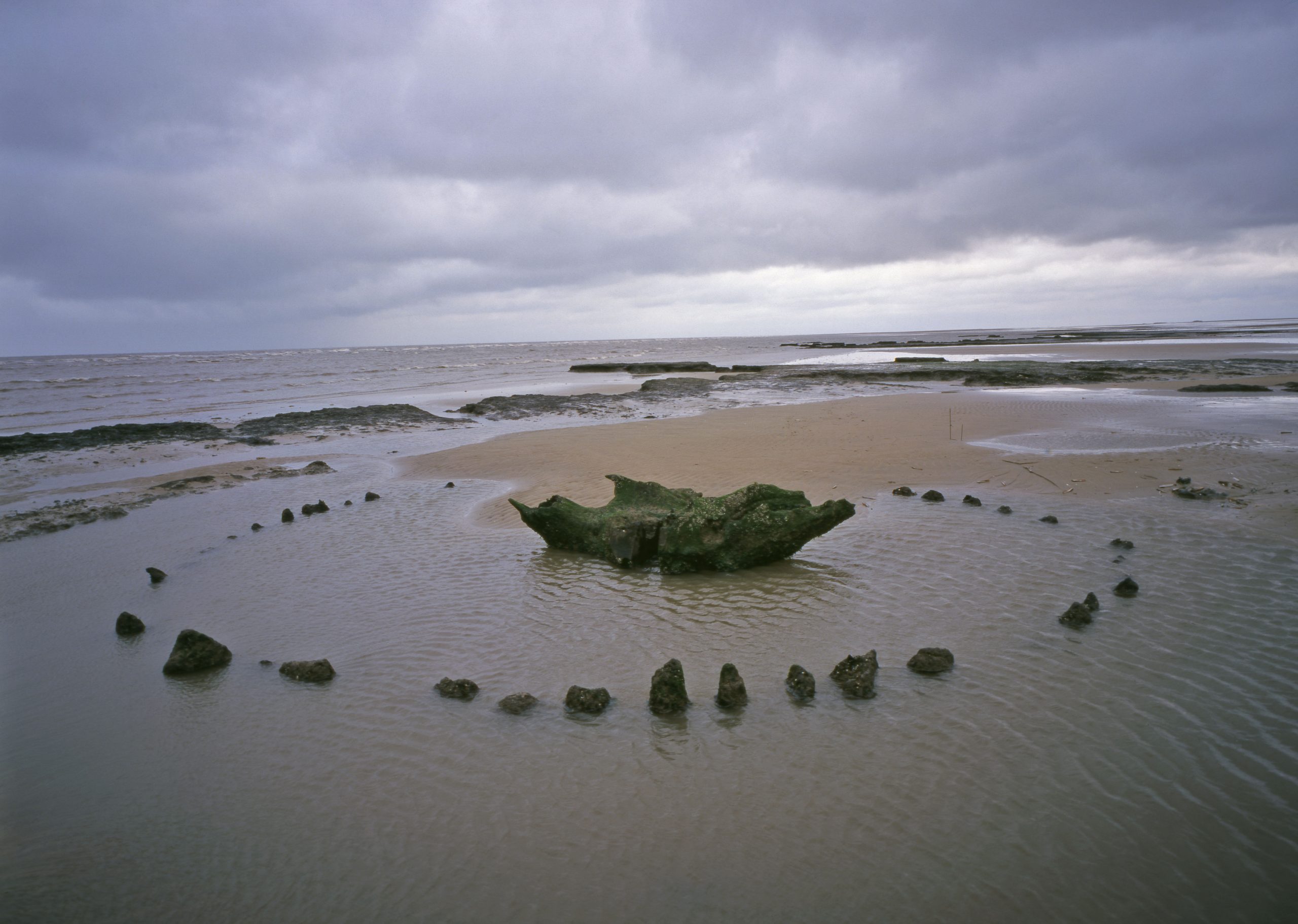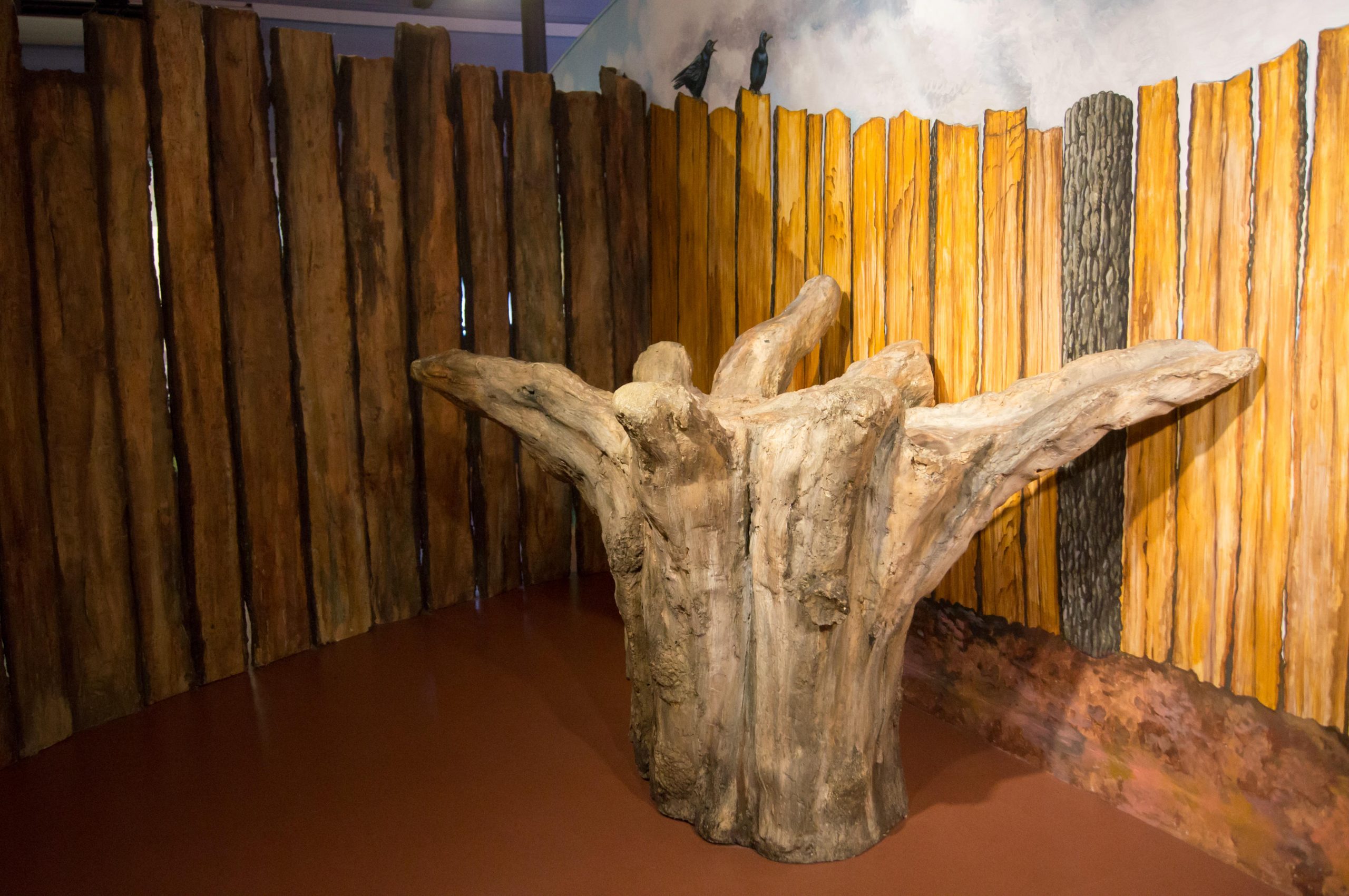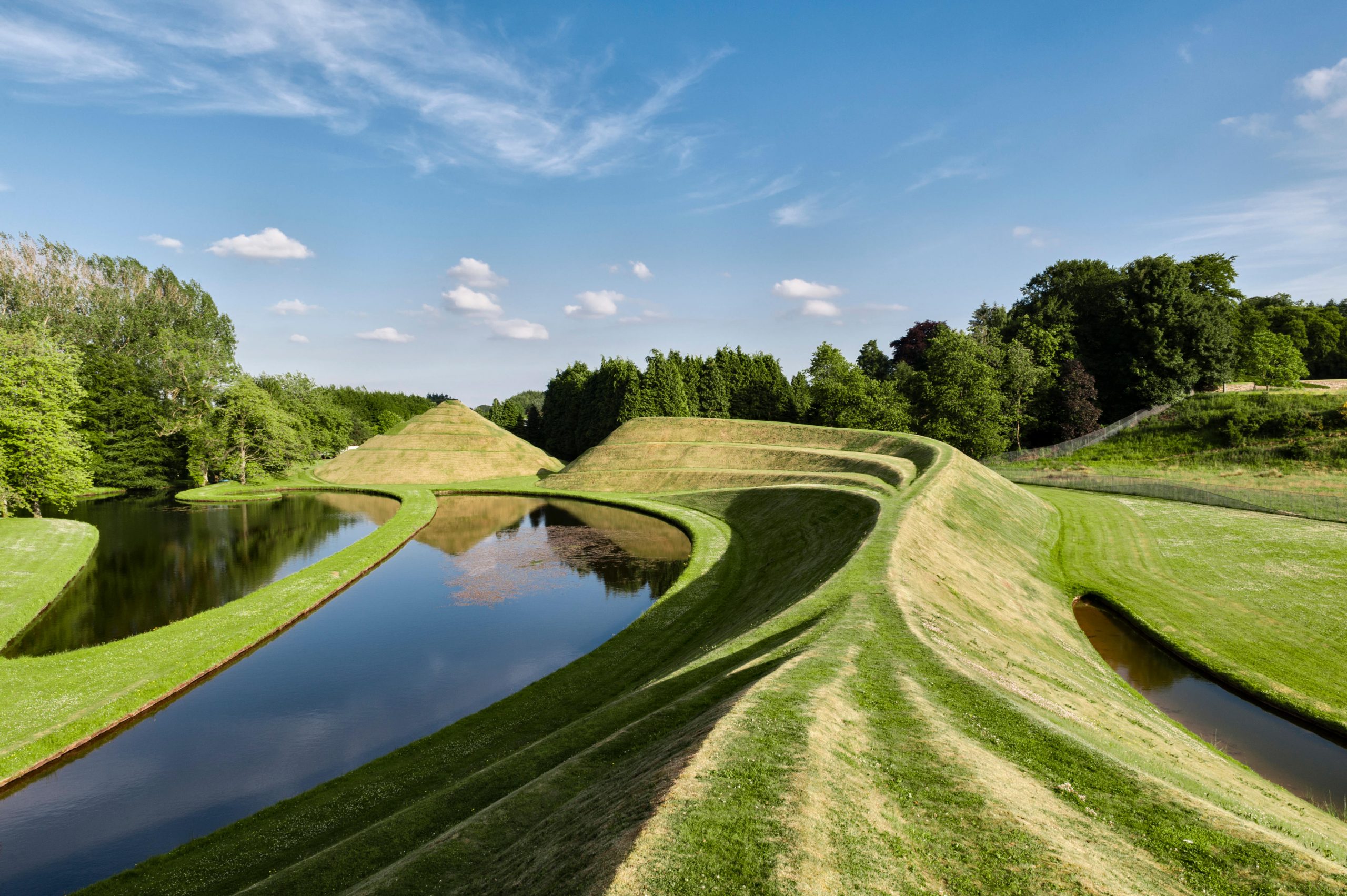Seahenge, Norfolk: The ancient Bronze Age circle that lay hidden for 4,000 years
Seahenge lay beneath the shifting sands of the north Norfolk coast almost until the dawn of the 21st century.


In 1998, a man named John Lorimer was walking along the beach at Holme-next-the-Sea when he stumbled upon an extraordinary Bronze Age timber circle that had emerged overnight from East Anglia’s shifting sands.
Archaeologists and druids flocked to see the 55 posts circling an upside-down tree, roots in the air, a relic from 2050 BC.

This 8ft-wide centrepiece — which was felled in springtime, scientists say, and may have been a ceremonial place from which decaying bodies could travel to the afterlife — is now on display at the Lynn Museum, King’s Lynn, together with half the original timbers and a life-size replica of what has become known as Seahenge.
See more of Secret Britain

Racton Folly, West Sussex: Flying bricks, faces in windows and a ghost tractor that sneaks up behind you
Our Secret Britain series continues with a look at a crumbling folly in Sussex.

Traeth Llyfn beach, Pembrokeshire: 'A beach so remote you’ll be the sole person on it'
The remote Traeth Llyfn beach is a Secret Britain spot accessible only by the adventurous.

Pont Minllyn, Gwynedd: The ancient pack-horse crossing that's four centuries old
A bridge coming up for four centuries old is today's Secret Britain find.
Sign up for the Country Life Newsletter
Exquisite houses, the beauty of Nature, and how to get the most from your life, straight to your inbox.
Annunciata grew up in the wilds of Lancashire and now lives in Hampshire with a husband, two daughters and an awful pug called Parsley. She’s been floating round the Country Life office for more than a decade, her work winning the Property Magazine of the Year Award in 2022 (Property Press Awards). Before that, she had a two-year stint writing ‘all kinds of fiction’ for The Sunday Times Travel Magazine, worked in internal comms for Country Life’s publisher (which has had many names in recent years but was then called IPC Media), and spent another year researching for a historical biographer, whose then primary focus was Graham Greene and John Henry Newman and whose filing system was a collection of wardrobes and chests of drawers filled with torn scraps of paper. During this time, she regularly gave tours of 17th-century Milton Manor, Oxfordshire, which may or may not have been designed by Inigo Jones, and co-founded a literary, art and music festival, at which Johnny Flynn headlined. When not writing and editing for Country Life, Annunciata is also a director of TIN MAN ART, a contemporary art gallery founded in 2021 by her husband, James Elwes.
-
 Two quick and easy seasonal asparagus recipes to try this Easter Weekend
Two quick and easy seasonal asparagus recipes to try this Easter WeekendAsparagus has royal roots — it was once a favourite of Madame de Pompadour.
By Melanie Johnson
-
 Sip tea and laugh at your neighbours in this seaside Norfolk home with a watchtower
Sip tea and laugh at your neighbours in this seaside Norfolk home with a watchtowerOn Cliff Hill in Gorleston, one home is taller than all the others. It could be yours.
By James Fisher
-
 St Patrick’s Chapel ruins, Heysham: The mythical Lancashire ruins with a heavenly view
St Patrick’s Chapel ruins, Heysham: The mythical Lancashire ruins with a heavenly viewAnnunciata Elwes takes a look at St Patrick’s Chapel ruins, a Morecambe Bay landmark.
By Annunciata Elwes
-
 Suisnish, Isle of Skye: The atmospheric ruins of a Clearance village
Suisnish, Isle of Skye: The atmospheric ruins of a Clearance villageBeauty now reigns in a tragic spot where hundreds of villagers suffered during the Clearance
By Annunciata Elwes
-
 Covehithe beach, Suffolk, where the cliffs crumble like cake
Covehithe beach, Suffolk, where the cliffs crumble like cakeThe most eroded beach in Britain has a post-apocalyptic feel.
By Annunciata Elwes
-
 Clydach Ironworks, Monmouthshire: Ruins in the gorge that inspired Shakespeare
Clydach Ironworks, Monmouthshire: Ruins in the gorge that inspired ShakespeareAn oasis of quiet now stands where the steam hammers thudded at this Welsh ironworks, in a river valley that may have moved Shakespeare to write A Midsummer Night’s Dream.
By Annunciata Elwes
-
 Royston Cave, Hertfordshire: A mysterious site full of sacred energy
Royston Cave, Hertfordshire: A mysterious site full of sacred energyOur Secret Britain series continues with a Hertofrdshire cave whose true nature remains unknown.
By Annunciata Elwes
-
 John Bunting War Memorial Chapel, Scotch Corner: The painstaking transformation of rubble to War Memorial
John Bunting War Memorial Chapel, Scotch Corner: The painstaking transformation of rubble to War MemorialAnnunciata Elwes celebrates the effort that turned a derelict house into a memorial.
By Annunciata Elwes
-
 The Garden of Cosmic Speculation: The surreal space where Lewis Carroll and Willy Wonka meet Capability Brown
The Garden of Cosmic Speculation: The surreal space where Lewis Carroll and Willy Wonka meet Capability BrownSurrealism, philosophy, nature and gardening come together at the Garden of Cosmic Speculation, as Annunciata Elwes explains.
By Annunciata Elwes
-
 The Airman’s Grave, Ashdown Forest: A touching and little-known memorial to victims of war and fate
The Airman’s Grave, Ashdown Forest: A touching and little-known memorial to victims of war and fateA wartime tragedy in East Sussex's Ashdown Forest is among our Secret Britain picks, as chosen by Annunciata Elwes.
By Annunciata Elwes